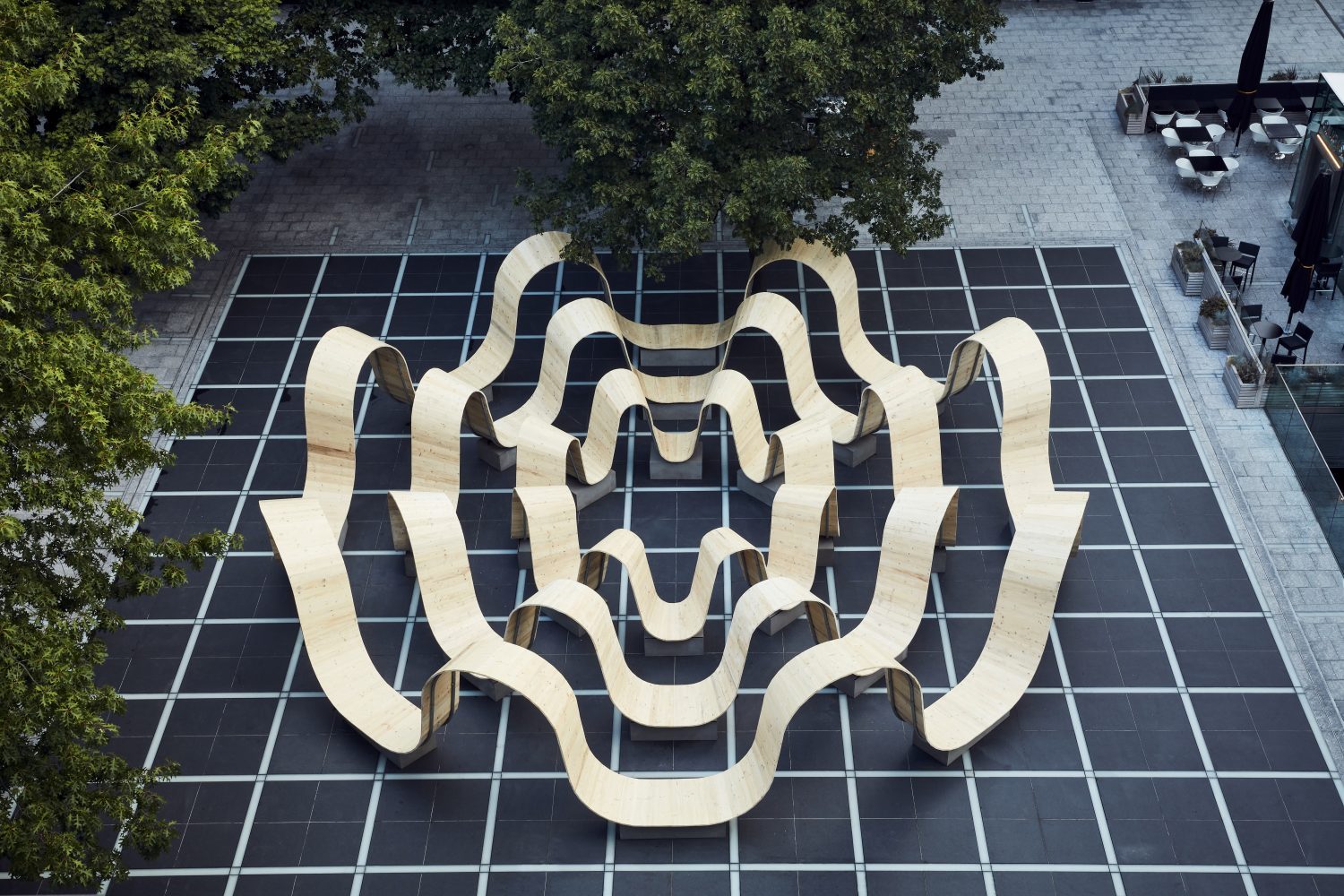Yesterday marked the beginning of the London Design Festival, showcasing the best designers in the industry, Editor Jess Bacon writes
With the blink of an eye the London Design Festival has returned again and it’s better and bigger than ever.
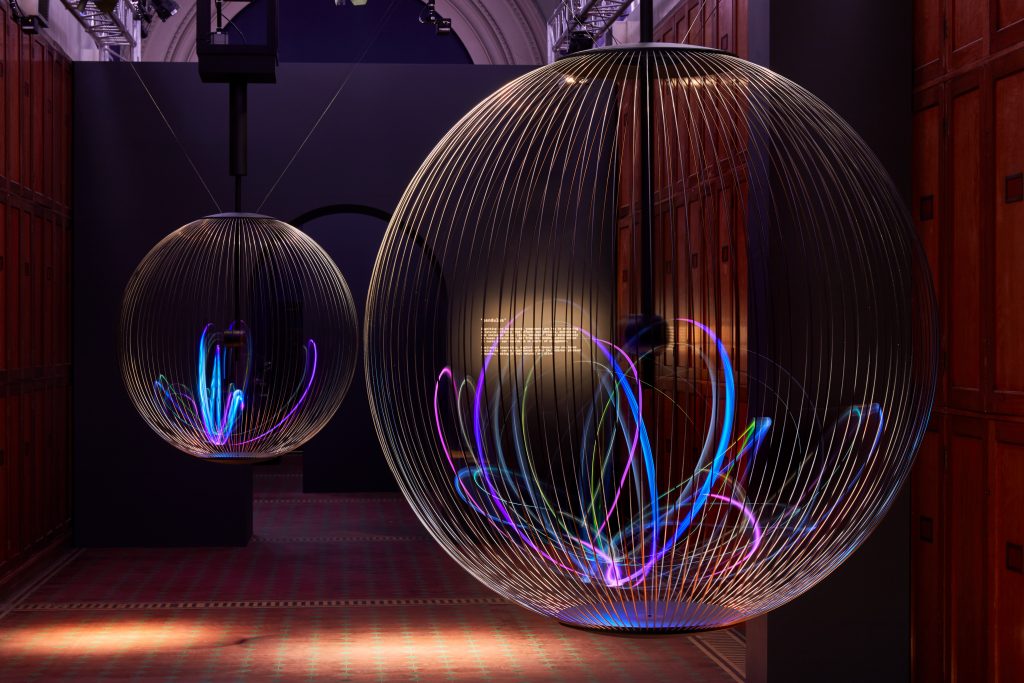
SONY’s Affinity in Autonomy sought to bridge the gap between technology and ordinary life, robotics and artificial intelligence. As a species we need to acclimatise ourselves to this new technology to see how this will shape our future.
Translating innovation into perceptual experience is the theme behind this interactive robotic pendulum that detects and reacts to human presence and movement.
Perhaps the most interesting aspect of this design of the double pendulum is that the movements are random to outline the free will of robotics, therefore the piece can engage or ignore passers by to portray emotion and sensitivity. Well worth a visit.
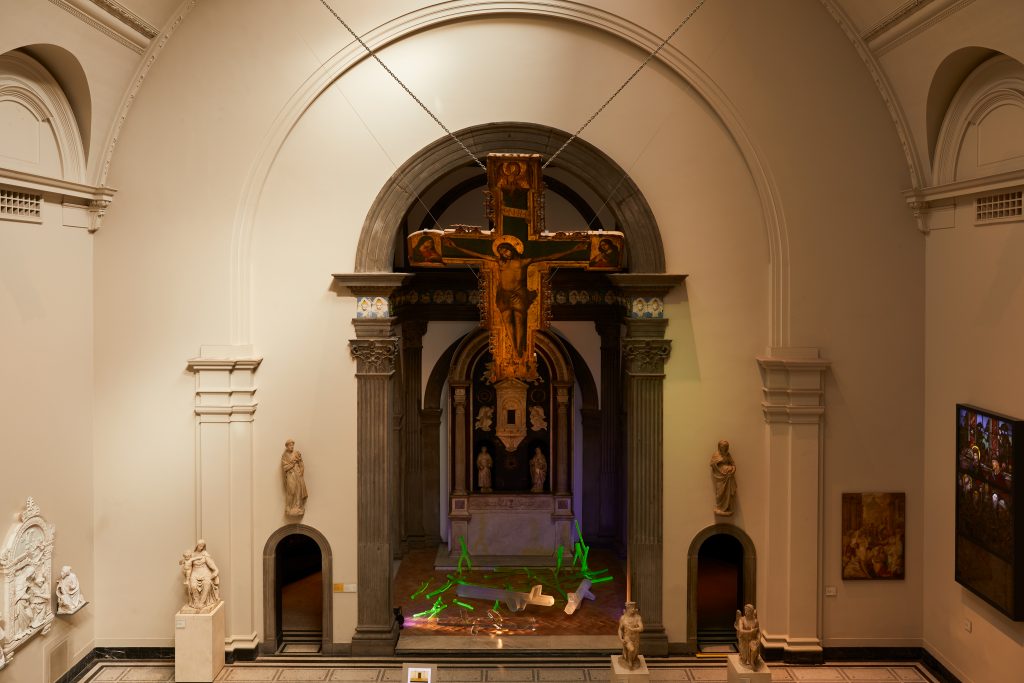
Sacred Geometry by Rony Plesl, showcase the Czech designer??s second exhibition for the festival. Plesl took inspiration from the idea of Sacred Geometry of stripping the universe back to its organised basic geometry to find higher meaning of the way the world is structured. The three hexagonal glass tree trunks, along with smaller glass branches made out of uranium glass that glows green under UV light, are all created through a new glass technology developed by the Czech company Bolety. It is this technology that made this piece possible and this display at the LDF is the first time it has been shown internationally.
The glowing forest of glass is undeniably eye-catching, but it was jarring against the location, the Medieval & Renaissance section in the Paul and Jill Ruddock Gallery.
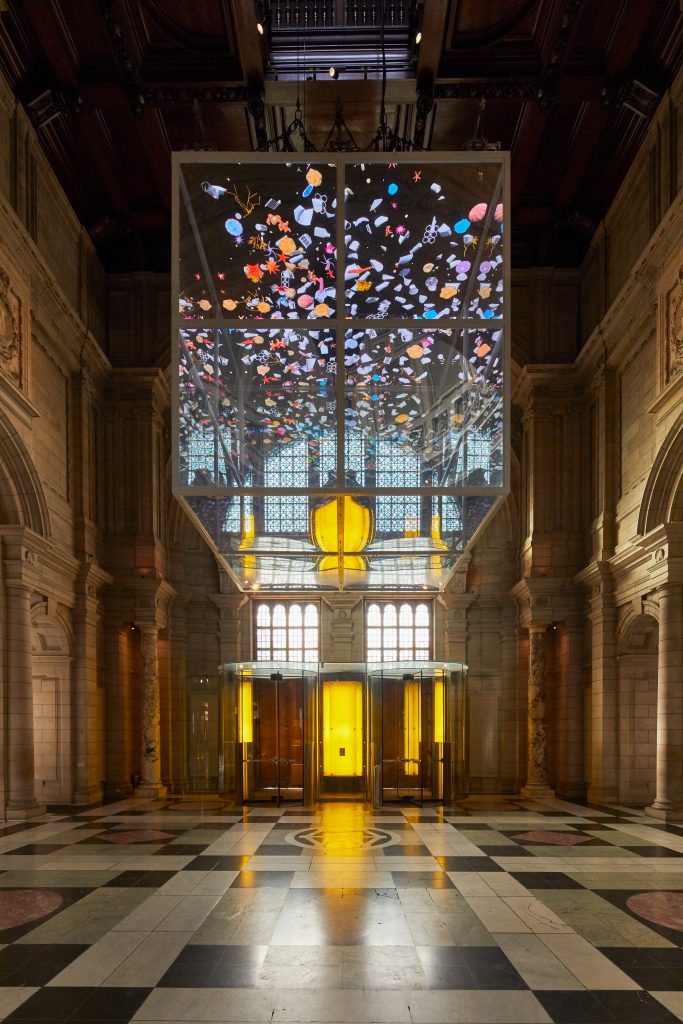
Another installation and a social media spectacle, Sea Things by Sam Jacob. Jacob addressed waste plastic that ends up in the ocean. Jacob said; “The V&A is a good place to think about our relationship to things, how we make them, what they mean, why we make them and ways in which artists and designers throughout culture and history have responded to issues with the sea, ocean and water in general.”
Suspended above the entrance, this large-scale two-way mirrored cube has an animated motion graphic internally reflected to an infinity that seems both as wide as the ocean and as large as the challenges we face. The perspex box symbolises the commercial form of plastic along with the evolution of the screen, which repeats the footage of the ocean. The video begins with sea things at the turn of the last century and follows it through to 2050 when it is predicted that the ocean will be made up of 50% waste. The footage is on a loop, so we return and end on the Sea Things, a subtle suggestion that if we change our habits today, we can change the future.
A thoughtful installation and expression of our toxic relationship with single use plastic overtaking and becoming more of the ‘Sea Things’ in our oceans.
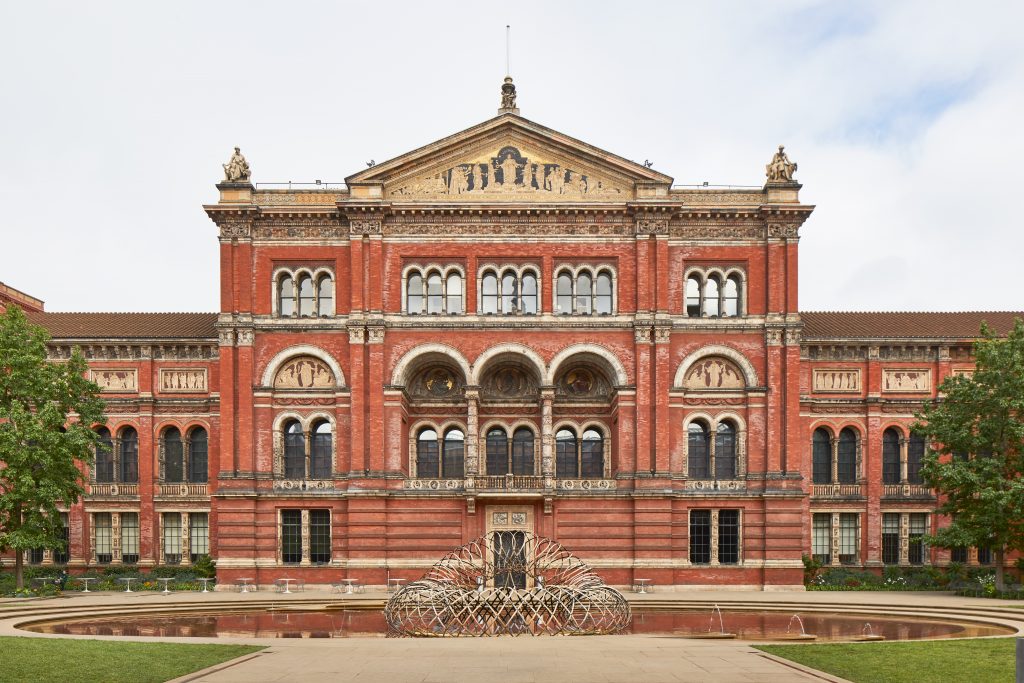
Taking center stage in the John Madejski Garden is Kengo Kuma’s Bamboo Ring: Weaving into Lightness. Kuma’s design was an experiment with the concept of weaving bamboo rings and carbon fibre together to create a donut-shaped structure with intertwining rings. The installation explores the pliancy, precision and lightness of the material.
Kuma said: “We tried to combine new technology with the traditional material of bamboo, by combining the bamboo with carbon fibre and laminating the material, rather than using glue to hold the material together.” The effect is that each ring achieves certain rigidity as well as being made of sustainable bamboo.
The piece contrasts the concrete on which it is placed with this natural and ancient material that has been manipulated with new materials into a new structure. Each ring was built in Japan and then transported to the UK, before they were woven together into a diagonal wave. It’s an original and innovative design that outlines how sustainable materials can be incorporated into new structures with the help of additional materials, such as carbon fibre.
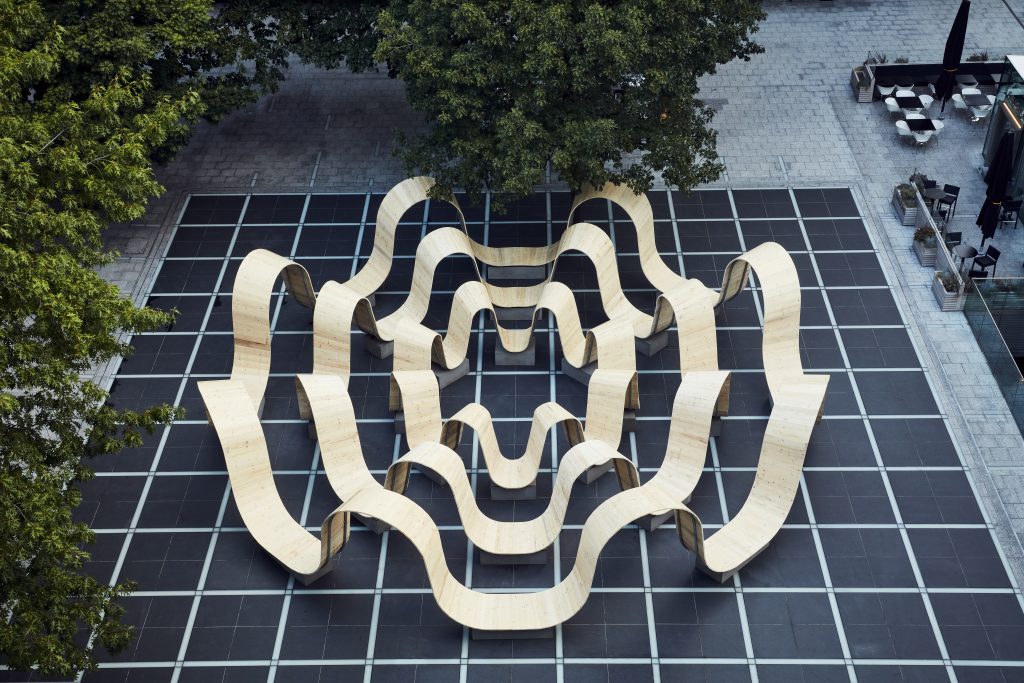
Out of all the pieces of display this year, Please Be Seated by Paul Cocksedge supported by British Land excelled my expectations.
British Land wanted to create a space where people wanted to spend their time and increasingly people recognise that great urban design can make people more sociable and live better lives. Broadgate was the chosen location for this landmark design as there’s a large footfall in the area with many people working and travelling through the square everyday.
By the time we arrived around noon, the sculpture was full of life; friends, colleagues, and individuals were seated in the undulating waves reading, eating, lounging, and soaking up the sun for five minutes. Six hours after it was constructed and already it has fulfilled it’s purpose.
Cocksedge said: “The arches allow people to flow through them and the down arches allow people to sit down and be at a different pace. It enables strangers to make connections. Creating public spaces like this in London is so important right now, it’s been a fantastic collaboration.”
Constructed from 1,000 scaffolding planks and poles by White & White, each piece of wood tells it’s own story as it has been used on building sites all over the country. This was the first time the wood had been shaped into a curved design, yet all of the three circles has a lightness of touch and has been moulded into smooth curves.
It’s an incredibly engaging piece of community architecture with an original design. Take a visit and find yourself a seat.
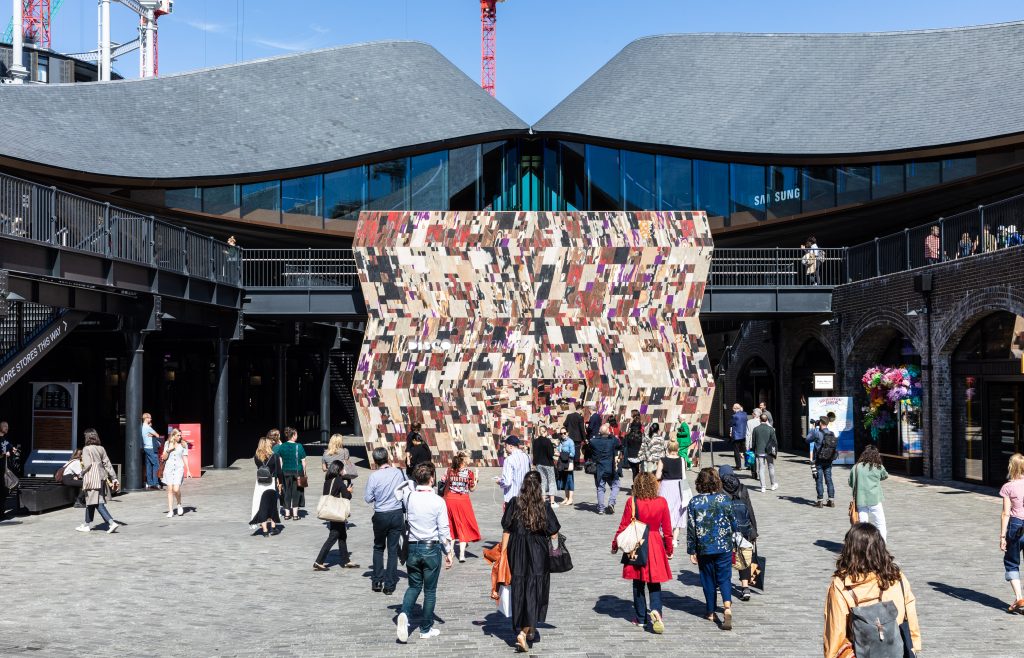
Disco Carbonara, a London Design Festival commission by Martino Gamper, installed in Coal Drops Yard at King’s Cross
We took another journey across London to King’s Cross hottest new destination, Coal Drops Yard to experience Martino Gamper’s Disco Carbonara. Disappointingly there was no pasta involved at this disco, but the false facade of a disco created from cladding from the Italian alps and inspired by the Potemkin village was a thoughtful piece of art.
In an attempt to create an immersive design, Gamper had a secret entrance blended into the facade, with a bouncer at the door ready to give you a Disco Carbonara club stamp. The theatricality of the experience was admirable, but entering into the Disco was very underwhelming. Each wall had a light projecting a design onto the plain wood, as a disco playlist played in the background. The interior was disappointingly basic after the impressive façade outside.
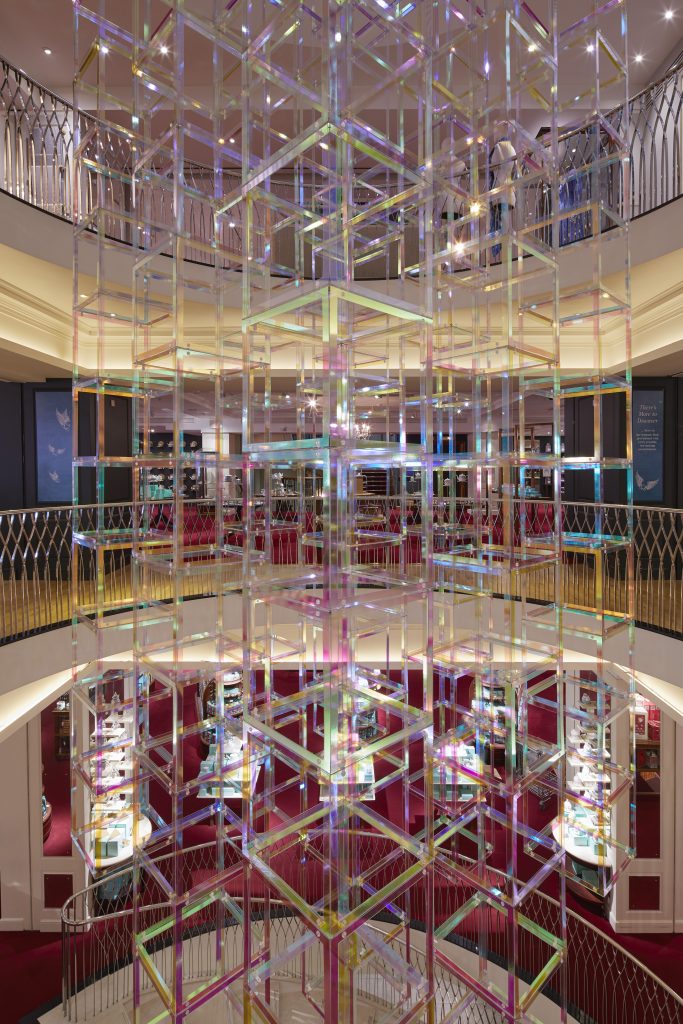
Our final destination was none other than London’s finest, Fortnum and Mason, to observe Liz West’s Iri-Descent. Descending from the ceiling above the iconic staircase is the skeletal framework of 150 cubes. Clad with dichromatic film in two different colourways, the cubes appear to change colour as visitors move around the atrium and between the floors.
West spoke of finding her inspiration for the geometry piece from her research with archivists and historians, that Fortnum’s was a safe haven for women around 300 years ago when Piccadilly was a busy area filled with working men, coach houses, Fortnum’s was lined with warm and inviting gas lights. She said: “As a female artist that works with light and colour, it felt like a nice collaboration.”
One of Fortnum’s aims is to bring joy, which West also related to through her work with colour and colour theory, that outlines the complex relationship that humans have with light and colour.
An inspired and thoughtful addition to the historic store, West’s work is a breath of fresh air with an ability to captivate shoppers, a very hard thing to do in a store that is in itself home to a thousand different aspects of beautiful design.
LDF showcased the diverse talent on offer in London; so don’t miss your chance to visit!


